What type of cloud is that?
It’s a question that I’ve wondered many times over the years, but somehow I always failed to follow up on finding the answer. With birds to see, butterflies to identify, and mammals to spotlight, I just never quite got around to honing my cloud identification skills. I could remember “cumulonimbus,” from my 4th-grade science class, and that’s about it.
That is, until the pandemic happened. After 6 months I’ve started a birding yard list, planted a garden, reorganized every closet in the house, and irritated my neighbors with my suburban spotlighting misadventures.
I’ve also spent a lot of time staring out of the window, so I figured it was finally time to learn how to identify clouds, a hobby known as cloudspotting. So if you’re like me and curious about clouds — or just short on ways to entertain yourself — here’s some basic information, resources, and tips to get you started.
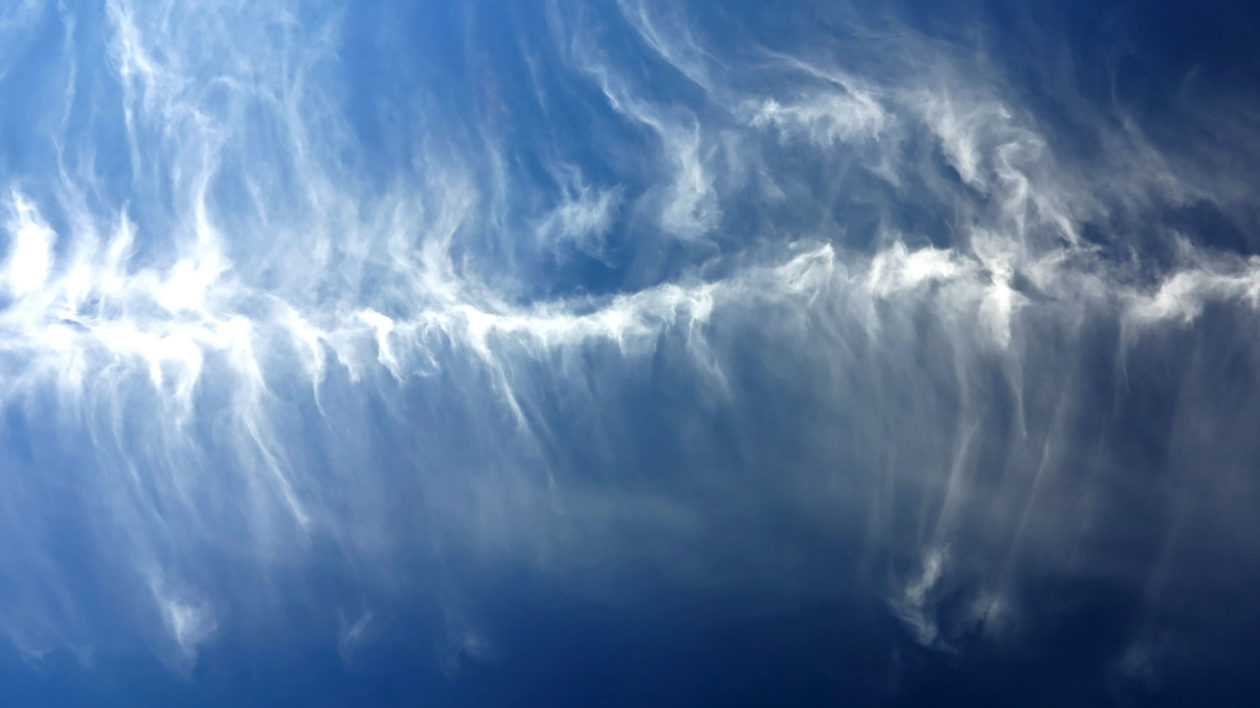
But First, A Latin Lesson
Clouds are grouped into 10 different genera, organized based on shape and the altitude where they’re found.
The genera names are all formed from the same five latin terms — cirro, cumulo, strato, nimbo, alto — which are mixed and matched to create names like cumulonimbus, cirrostratus, cirrocumuus…. you get the idea. Learning what each of these Latin roots means is key to keeping your clouds straight:
- Cumulo translates to “heaped.” Think puffy, piled, marshmellowy clouds.
- Strato translates to “layered.” Clouds with strato in their name are often flat and form a wide layer across the sky.
- Nimbo translates to “rain,” and is used for the two clouds that regularly produce rain.
- Cirro translates to “curl.” These clouds are sometimes (but not always) curled and are found in the highest layer of the troposphere.
- Alto translates to “high.” Confusingly, this doesn’t mean the clouds in the highest part of the atmosphere, just that the cloud is higher relative to others of its type.
Confused? Stay with me.

Cloud Shapes 101
Now that we have the Latin lesson out of the way, let’s explore the 10 cloud genera. There are two ways to group clouds, either by altitude (low, medium, or high) or by shape (layer, heap, layer-heap, rain, wispy). I’ve found the shape method easiest, so we’ll use that here.
Layer Clouds: Stratus, altostratus, and cirrostratus. All three of these clouds form blanket-like layers in the sky. Each one can be found at a different altitude.
- Stratus clouds are nondescript, thick, blanket-like clouds that form low in the sky. Think of the last gray, overcast day when it didn’t rain… those were probably stratus clouds. (Fog is just a ground-level stratus cloud.)
- Altostratus clouds are mid-level, gray, blanket-like clouds. These clouds are uniform and featureless, and can sometimes produce rain.
- Cirrostratus clouds are thinner, transparent, and found at high altitudes. Think of hazy, veil-like clouds found high in the sky. They’re also whiter than the other layer clouds and can produce sun halos.
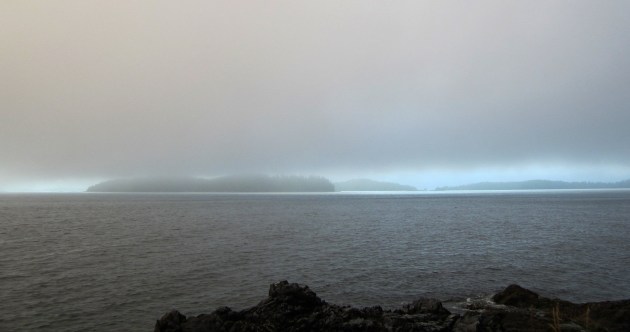


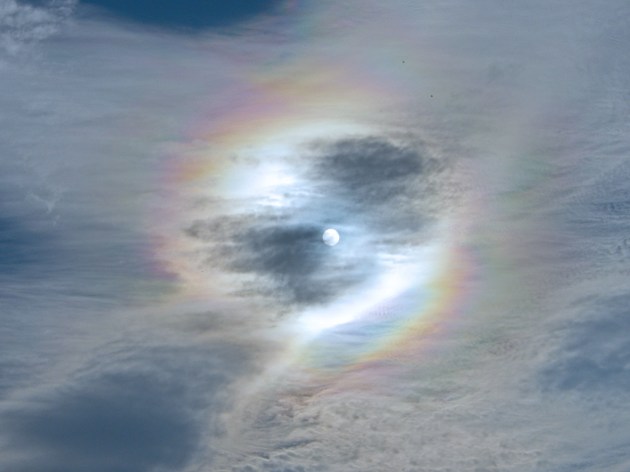
Heap clouds: Cumulus, altocumulus, and cirrocumulus. All three of these clouds are puffy and again each is found at a different level of the atmosphere.
- Cumulus clouds are the archetypal poofy, white, cotton-ball clouds that we all draw as kids. (No surprise, they’re the easiest to identify.) They’re lower in the atmosphere, white to light grey in color, and are often found in mostly sunny skies.
- Altocumulus clouds are found in the mid-levels of the troposphere. Whereas cumulus clouds remind me of cotton balls or marshmellows, altocumulus clouds remind me of popcorn, because they’re often found bunched together in heaps or rolls. They’re also one of the most variable cloud types.
- Cirrocumulus clouds are high, thin, white clouds that remind me of wave patterns on shallow water or feather down. Cirrocumulus and altocumulus clouds are sometimes called a “mackerel sky” because their pattern resembles fish scales. They’re one of the least-spotted cloud genera, and they create absolutely fantastic sunsets.
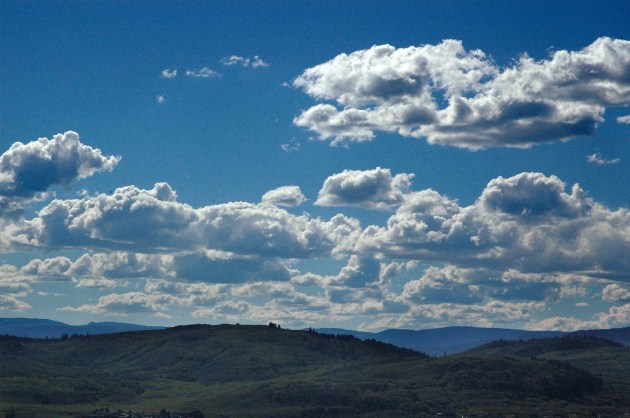
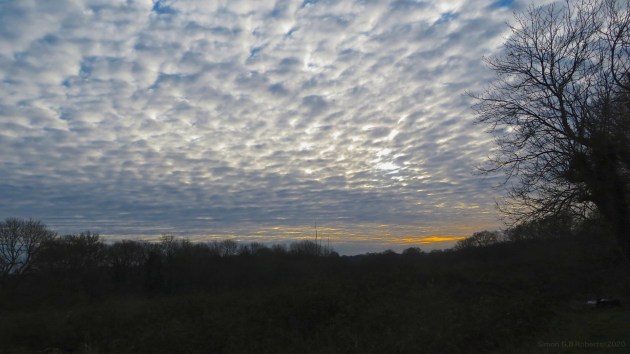
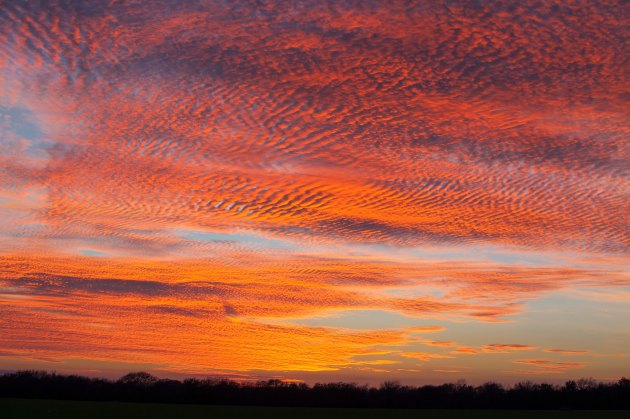
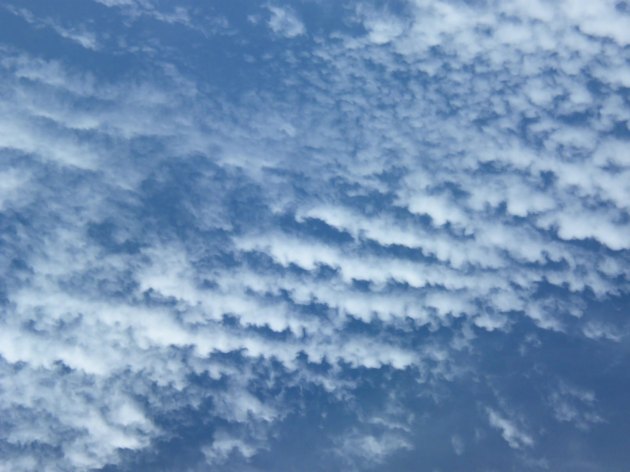
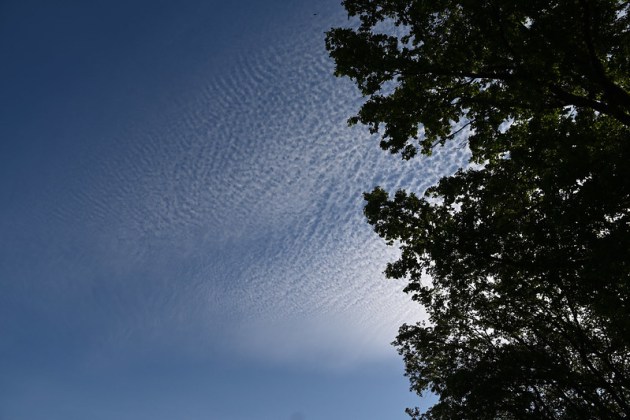
Layer-heap cloud: Stratocumulus
Stratocumulus clouds look like a thick, low-level layer of puffy clouds, all joined up together. I find these clouds hard to identify, because they’ve variable and retain features of both stratus and cumulus clouds. If you see what looks like an altocumulus cloud that’s close to the ground, it might be a stratocumulus.
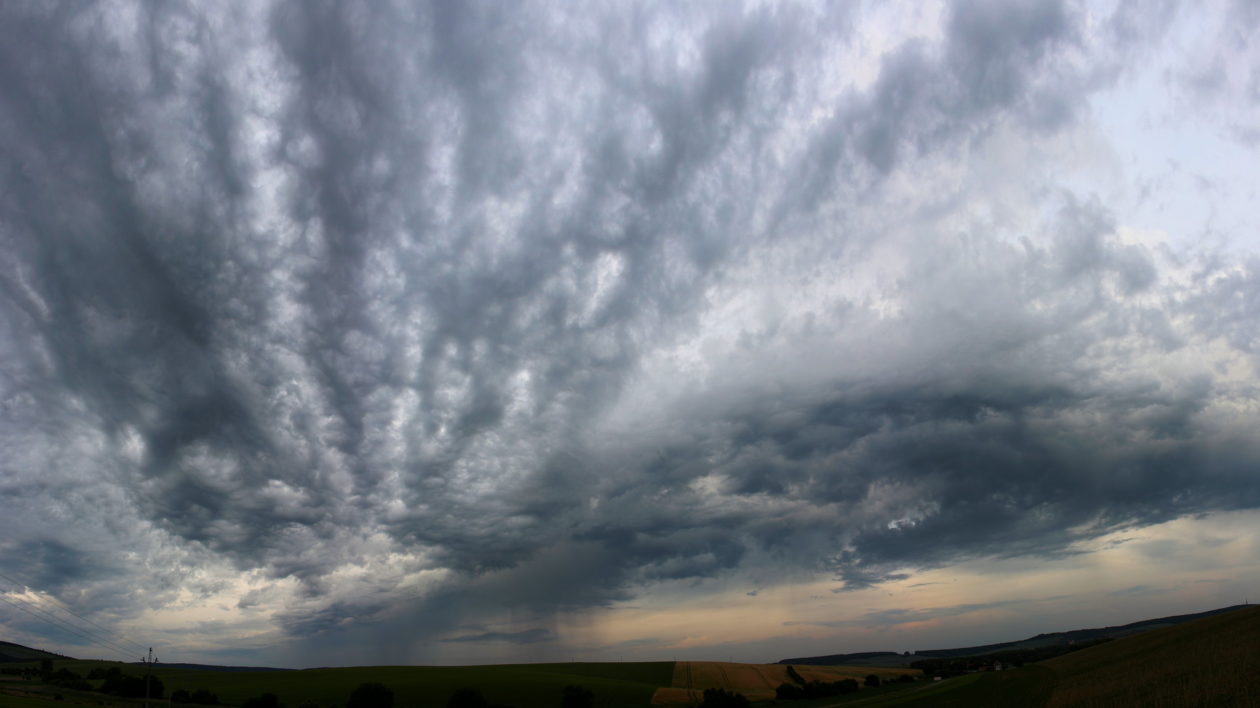
Wispy clouds: Cirrus
Cirrus clouds are one of the easier clouds to identify. If you see delicate, feathery streaks high in the sky, it’s a cirrus cloud. These clouds are made of ice crystals instead of water vapor and often have a fibrous appearance.
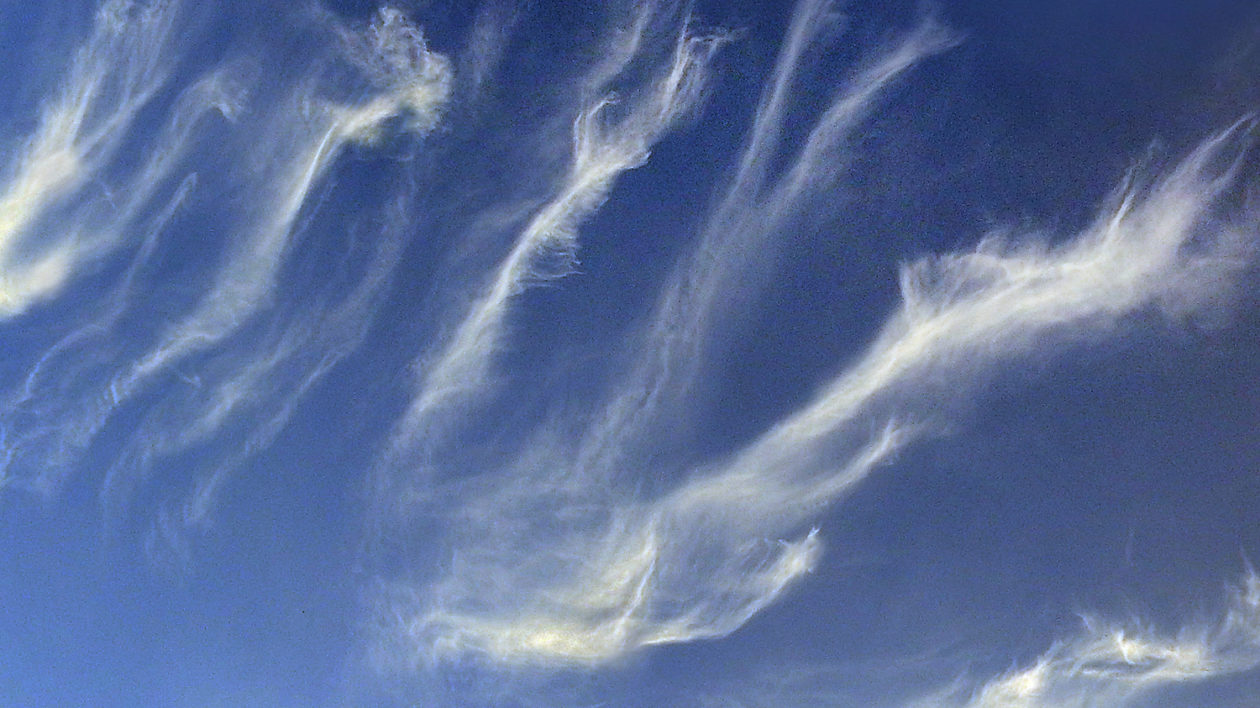
Rain clouds: Cumulonimbus and nimbostratus. Is it raining? Then you’re probably looking at one of these two cloud types.
- Cumulonimbus are more often associated with storms. They’re dark and towering, and are the only cloud type that can extend through all three levels of the troposphere.
- Nimbostratus clouds are dark, featureless layers that create those drizzly days where you stay indoors and curl up with a good book by the fire.
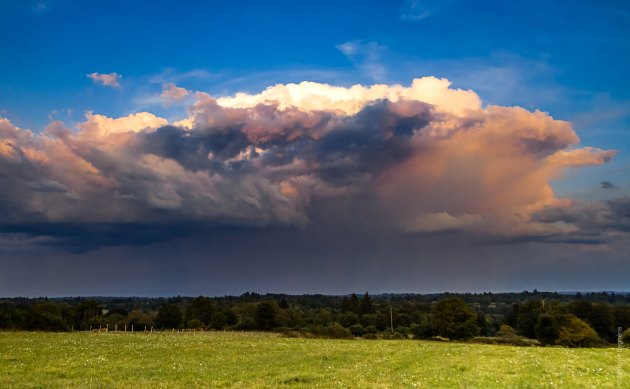
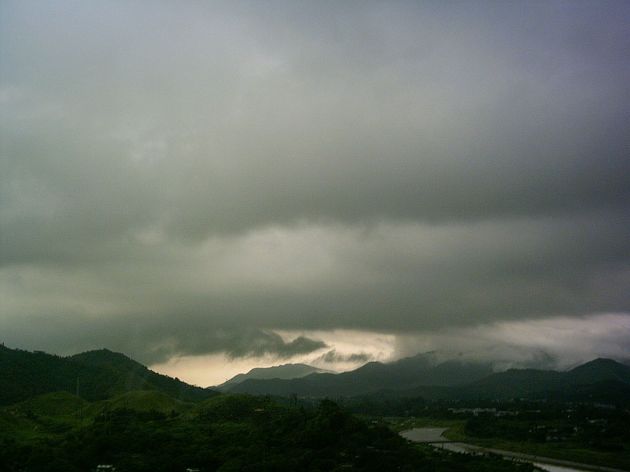
Advanced Clouds
Getting a good handle on these 10 cloud genera is the essential starting point for newbie cloudspotters. From there, you’ll be ready to move on to more advanced clouds.
I’ve been using the word “genera” for a reason, because classifying clouds has much in common with classifying species. Within the 10 cloud genera there are 15 cloud species, 9 varieties, 11 supplementary features, 4 accessory clouds, and 5 other kinds of clouds. Overwhelmed? Me too.
But don’t panic! Beginner birders need to sort out the differences between warblers, sparrows, and flycatchers before they can move on to parsing the subtleties between Empidonax species.
Cloudspotting is the same. Just start with the 10 cloud genera first. Once you have that down reasonably well, then move on to the species. When you’re ready, the website whatsthiscloud.com does an excellent job of explaining the cloud types and the more advanced species and varieties.
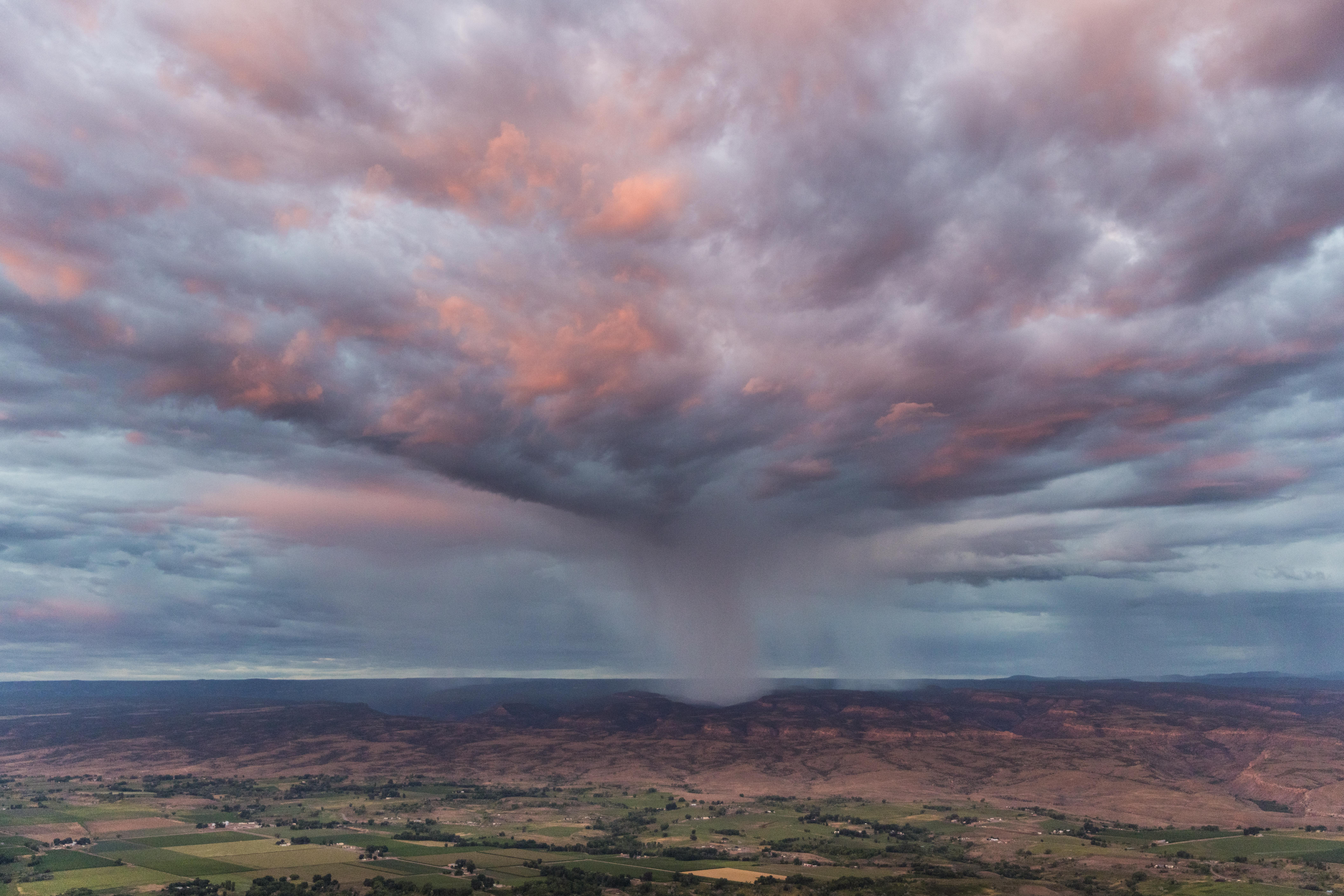
Rare Clouds & Meteorological Phenomenon
Perhaps the most surprising discovery of my adventures in cloudspotting was that cloudspotters can be just as keen as birders when it comes to chasing rarities. While I don’t think twice about taking a three-week road trip to see my first wild cassowary, it never occurred to me that you could do the same thing for clouds.
In some parts of the world, rare meteorological phenomena are somewhat of a regular occurrence, drawing cloudspotting tourists from far away.
Burketown, Australia is one example. From late September to early November of each year the meteorological forces combine to produce a stunning type of stratocumulus cloud called Morning Glory. These clouds look like long, straight cylinders lined up one after the other, stretching for up to 600 miles.
The coast along the Gulf of Carpentaria is the only place in the world where you can reliably see Morning Glory clouds, preferably from eye level on a cloud-viewing flight. They have been spotted elsewhere, but they’re so rare that such an occurrence makes the news.

Mammatus clouds are a stratocumulus species with a weird, pouched shape. (To me they look like a pile of rounded river stones, but in a cloud.) They often form in association with a thunderstorm.
Lenticular clouds are thought to be responsible for many UFO sightings because they look remarkably like a flying saucer. These wavy or pancake-stack clouds are formed from gravitational waves when a cloud and air mass pass over an obstacle, like a mountain.
Kelvin-Helmholz waves are clouds that look exactly like a cartoon drawing of surfer’s waves.
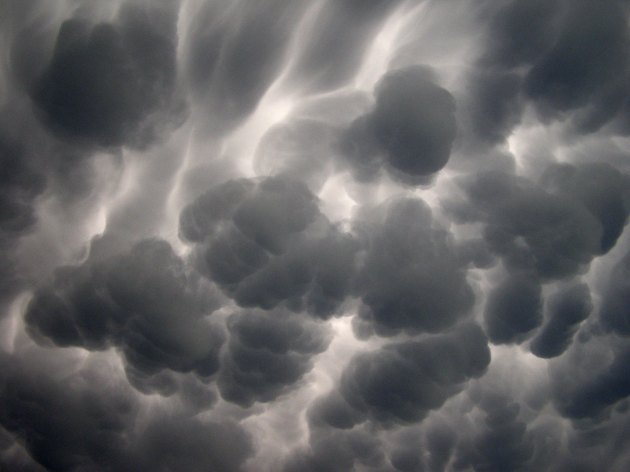
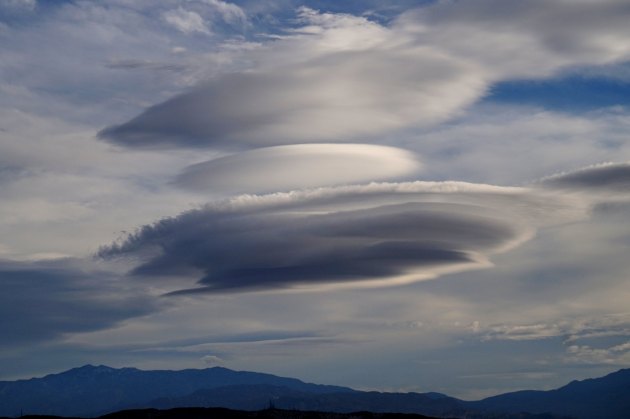

Nacreous clouds form near the Earth’s poles in winter, when extremely cold temperatures crystallize ice high in the atmosphere. These clouds form at altitudes greater than 15,000 meters, so light illuminates them even when the sun dips below the horizon. The result is an iridescent, multicolored sheen much like mother of pearl. But danger lurks behind this beauty. The presence of nacreous clouds accelerates the chemical reactions that destroy the ozone layer.
Asperitas clouds were only officially recognized in 2015, making them the first new cloud to be identified in more than 50 years. They look like dark, swirling waves flowing across the sky, sort of like an upside-down ocean.
Fallstreak holes form in cirrocumulus or altocumulus clouds when an airplane causes a patch of moisture to freeze into ice crystals and fall to earth. They’re sometimes called hole-punch clouds.
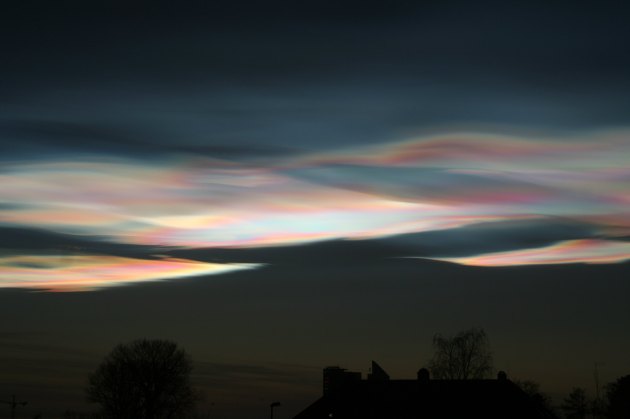
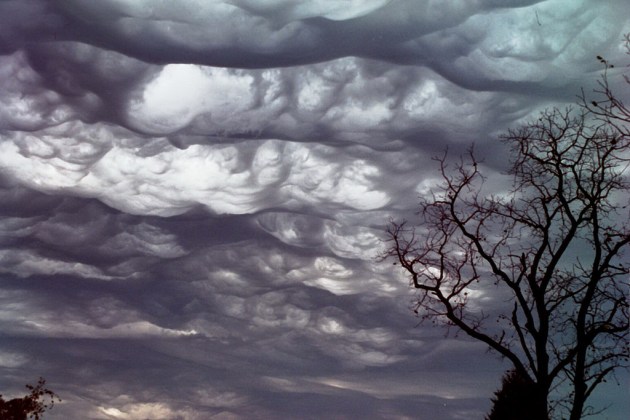
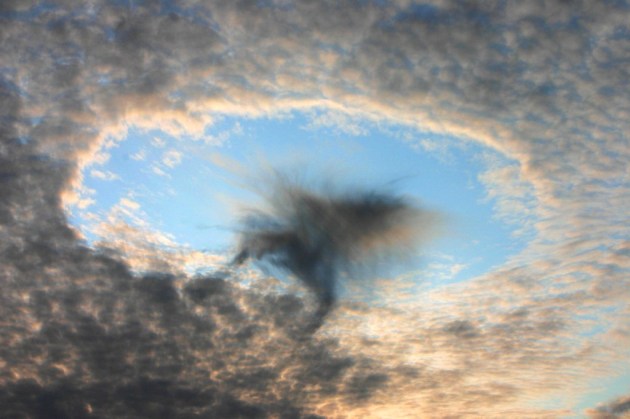
Trips, Tricks, and Cloudspotting Resources
If you’re completely new to cloudspotting, the website whatsthiscloud will be a great introductory guide. They have more detailed descriptions and photographs of each of the cloud genera and species, along with a helpful little infographic that shows each type’s color, altitude, probability of precipitation, etc.
There’s a field guide for everything, and clouds are no exception. When you’re ready for more, check out The Cloudspotters Guide, by cloud guru Gavin Pretor-Pinney. He digs into the science, history, art, and pop culture of clouds. Pretor-Pinney also founded the Cloud Appreciation Society, which has more than 51,000 members and a helpful identification help forum, among other resources.
Prefer a digital version? There’s an app for that. The CloudSpotter iPhone app provides identification tools and allows users to share their own cloud images, which NASA will use to help calibrate its cloud-observing satellites.
Or you could take the low-tech approach, like I did, and print out good old-fashioned flashcards. You can use them to study, keep them on hand to aid with identification in the field, or convince a patient partner or family member to help quiz you.
Above all, just practice. The great thing about clouds is that — with the exception of that perfect sunny day — they’re everywhere. All you need to do is walk outside and look up. (Preferably with sunglasses on!)
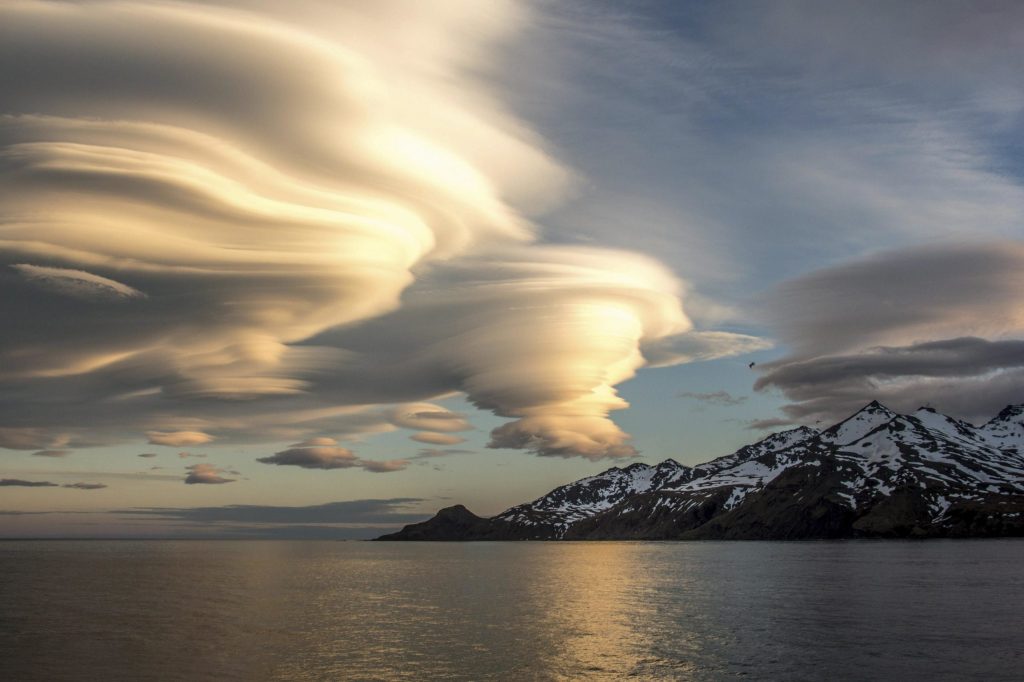



There have been numerous studies and publications delving deeper into the connection between clouds and mental health, with a focus on how cloud glazing can help relieve anxiety. One study in the Journal of Health Psychology found that spending as little as 10 minutes a day observing clouds can lead to a significant decrease in symptoms of anxiety and stress. Additionally, a review published in Frontiers in Psychology found that cloud gazing can even improve cognitive performance and creativity.So, what is it about clouds that makes them such a powerful tool for relieving anxiety? Experts believe that it has to do with the calming effect of being in nature and practicing mindfulness. When we take the time to observe clouds, we are forced to slow down, be present in the moment, and let go of our worries and fears. The ever-changing and transient nature of clouds also serves as a reminder that everything in life is temporary, including our stress and anxiety.